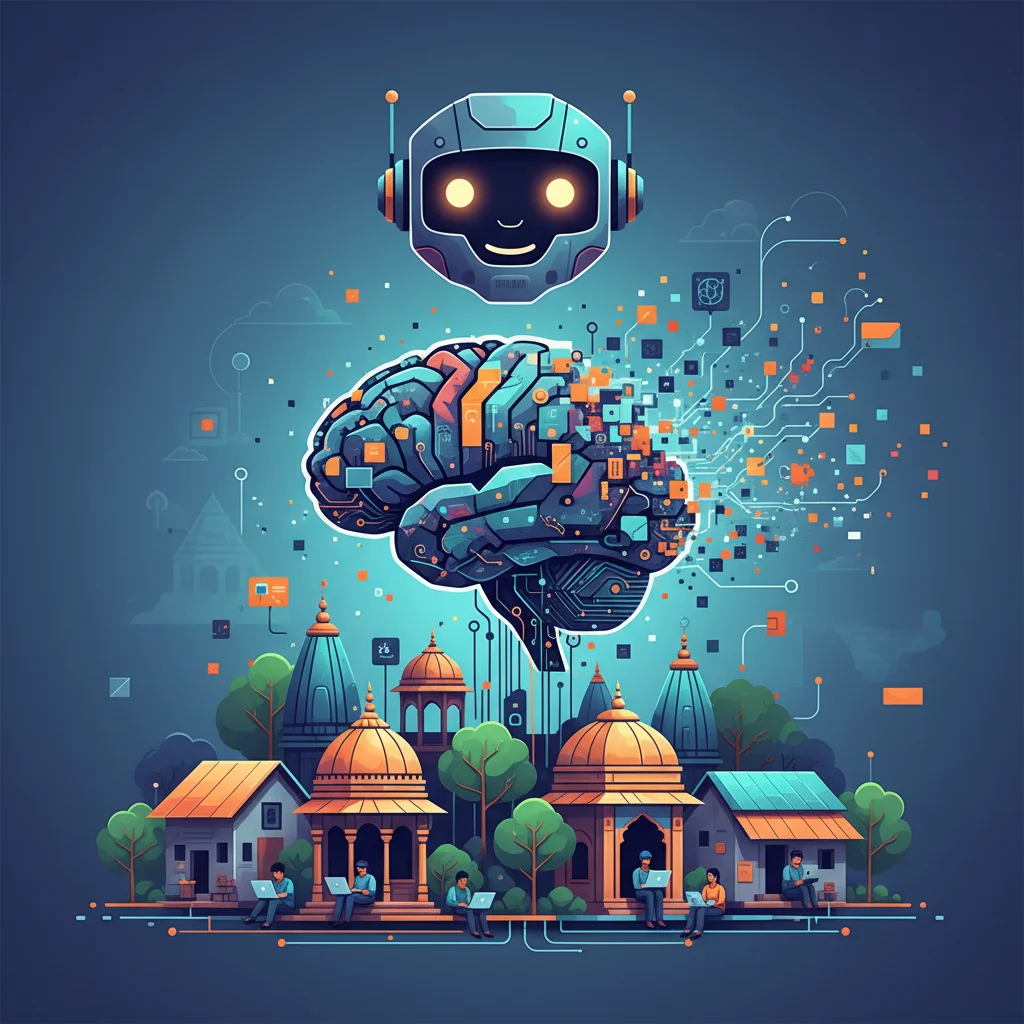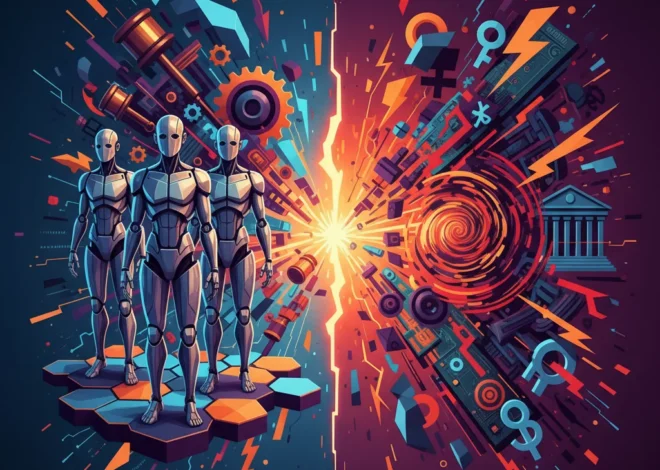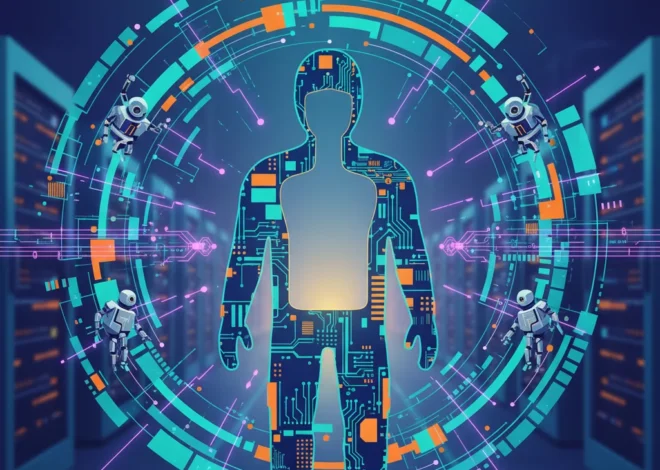
Beyond the Code: How India’s Small Towns Are Secretly Training Your Favorite AI
You’ve probably had this experience: you ask an AI chatbot a question, and it gives you a bizarre, nonsensical, or just plain wrong answer. It might confidently invent historical facts, create fake legal precedents, or generate an image of a man with three hands. We call these “hallucinations,” and they’re a fascinating, frustrating quirk of modern artificial intelligence. But have you ever stopped to wonder who fixes these mistakes? When an AI goes off the rails, who nudges it back on track?
The answer isn’t a super-intelligent algorithm or a team of PhDs in a shiny Silicon Valley office. Increasingly, the answer is found thousands of miles away, in the bustling towns and rural communities of India. Places like Metiabruz, a suburb of Kolkata, are emerging as the unsung epicenters of AI refinement, where a dedicated human workforce is meticulously teaching machines to be smarter, safer, and more reliable. This isn’t just about outsourcing; it’s about the creation of a new, vital layer in the global tech ecosystem, a human-powered engine that fuels the world’s most advanced AI and machine learning models.
The AI’s Achilles’ Heel: Why Machines Still Need Human Teachers
For all their power, Large Language Models (LLMs) and generative AI systems are fundamentally flawed. They are brilliant at pattern recognition and prediction, but they lack genuine understanding, common sense, and a grasp of nuance. They learn from vast datasets scraped from the internet, which are filled with human biases, inaccuracies, and toxic content. Without a corrective force, AI models would simply amplify these flaws.
This is where the concept of “human-in-the-loop” becomes critical. The most prominent method used today is Reinforcement Learning from Human Feedback (RLHF). In simple terms, it’s a three-step process:
- An AI model generates multiple responses to a prompt.
- A human “trainer” reviews these responses and ranks them from best to worst.
- This feedback is used to “reward” the model for generating better answers, fine-tuning its future performance.
This process, along with data annotation (e.g., meticulously labeling objects in images to train self-driving cars), is a monumental task. It requires millions of human-hours and a keen eye for detail. It’s a type of work that, for now, defies complete automation. It requires human judgment, cultural context, and an intuitive sense of what “feels” right—qualities that even the most advanced software can’t yet replicate.
As one data annotator, Suman Howlader, explained to the BBC, his team’s job is to ensure AI models provide the “most accurate and harmless answer.” This crucial work, happening far from the epicenters of tech innovation, is what makes the AI tools we use every day usable and safe.
From Bangalore to the Backwaters: The New Geography of Tech
For decades, India’s tech story was centered around megacities like Bangalore and Hyderabad, known for their sprawling IT parks and software development prowess. But the rise of the AI data industry is creating a new map. Companies are deliberately setting up operations in smaller, Tier-2 and Tier-3 cities and even rural areas.
Why the shift? It’s a confluence of strategic advantages. These regions offer a vast, educated, and largely untapped talent pool. Crucially, the cost of living and operations is significantly lower than in the metro areas, allowing startups and established companies to scale their human feedback operations affordably. The Indian government’s “Digital India” initiative has also played a massive role, pushing internet connectivity and digital literacy into the country’s farthest corners.
Companies like iMerit have become pioneers in this space, building a workforce of over 5,500 people, with a significant portion hailing from smaller towns. They recognized that the skills needed for high-quality data annotation—attention to detail, critical thinking, and reliability—are not exclusive to big cities. This has created a powerful economic engine, providing stable, white-collar jobs in areas where such opportunities were previously scarce. According to the BBC, iMerit has seen a 45% increase in demand for its services over the past year, a testament to the explosive growth in this sector.
Here’s a look at how this new model of AI services compares to traditional IT outsourcing:
| Factor | Traditional IT/BPO Model | AI Data Training & Annotation Model |
|---|---|---|
| Location Focus | Tier-1 Metro Cities (e.g., Bangalore, Pune) | Tier-2/Tier-3 Cities & Rural Areas (e.g., Metiabruz, Hubli) |
| Core Skillset | Customer service, basic coding, process management | Critical thinking, nuance, subject matter expertise, data analysis |
| Nature of Work | Often process-driven and repetitive | Judgment-based, cognitive, and highly contextual |
| Impact on AI | Ancillary (e.g., tech support for software) | Directly shapes the core intelligence and safety of AI models |
| Economic Impact | Concentrated wealth in major urban centers | Distributes economic opportunity to underserved regions |
The Human Element: More Than Just Clicks
It’s easy to dismiss this work as simple “clickwork,” but that would be a profound misunderstanding. Training an AI to understand the world requires a deep level of human insight. Consider the tasks:
- Autonomous Vehicles: An annotator in India might be tasked with drawing precise boxes around pedestrians, cyclists, and street signs in images from a car’s camera. A single mistake could have life-or-death consequences. They need to differentiate between a plastic bag blowing in the wind and a small animal darting into the road.
- Content Moderation: An AI trainer might review text generated by a chatbot to ensure it’s not producing hate speech or misinformation. This requires a sophisticated understanding of cultural context, slang, and subtle forms of harmful language, a key aspect of AI cybersecurity and safety.
- Medical AI: A specialist might label medical images, identifying tumors or anomalies to train diagnostic AI. This requires domain-specific expertise and incredible precision. As the BBC report notes, some of these workers are doctors who use their expertise to train medical AI models.
This work is a unique blend of a programming-adjacent skill and a liberal arts sensibility. It’s not about writing code, but it is about understanding the logic, limitations, and outputs of code. For many, like Suman Howlader who previously worked in a less stable job, it represents a significant career opportunity and a pathway into the formal digital economy (source).
Challenges and the Road Ahead
Despite the immense opportunities, this burgeoning industry is not without its challenges. The “ghost worker” narrative often surrounds this type of labor, raising valid concerns about wages, working conditions, and the repetitive nature of some tasks. Ensuring fair compensation and providing career growth pathways is essential for the long-term sustainability and ethical grounding of this industry.
There’s also the existential question: what happens when AI gets good enough to do this work itself? As models become more sophisticated, it’s plausible they could learn to self-correct more effectively, potentially reducing the need for human intervention on this scale. However, most experts believe that for the foreseeable future, human oversight will remain critical, especially for handling novel situations, complex ethical dilemmas, and the ever-shifting nuances of human language and culture. The jobs may evolve from simple labeling to more complex roles like AI auditing, bias detection, and “red-teaming” (actively trying to break the AI to find its flaws).
The Global Brain is Human
The next time you’re amazed by an AI’s creativity or saved from a nonsensical answer, remember the vast, global, and very human network that made it possible. The development of artificial intelligence is not a story confined to gleaming tech campuses. It’s a story being written in the towns of rural India, by people who are performing the essential, intricate work of teaching machines how to think.
This isn’t just an economic trend; it’s a fundamental shift in how we build technology. It proves that the future of innovation isn’t just about better algorithms or faster processors. It’s about combining the computational power of machines with the wisdom, context, and oversight of people. The unseen engine of AI is, and will continue to be, profoundly human.


